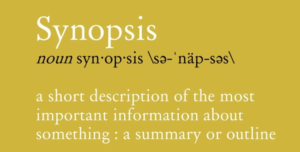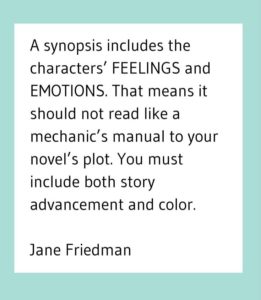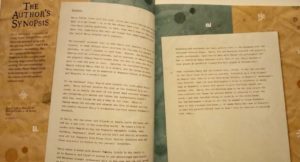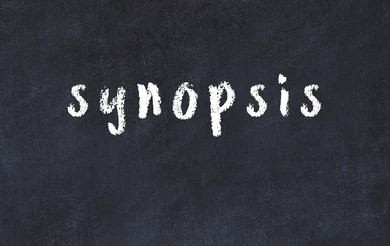How to Write a Perfect Synopsis for your Book?
Are you an aspiring author looking to take your writing career to the next level? Writing a synopsis is an essential step in the process, providing a synopsis of your story and giving potential readers a glimpse at what your book has to offer. But how do you write the perfect synopsis?
In this blog article, we’ll explore what is a synopsis, how to write a synopsis, and what are the elements of a good synopsis. Whether you’re just getting started or are already on your journey as a professional author, understanding what makes up a great synopsis can give you the edge when it comes to clinching the immediate and undivided attention of your readers.
- The concept of a synopsis and why it is important for authors
- Elements of a great synopsis
- Plot Summary
- Character Description and Arc
- The Setting of your story
- Crafting an effective story arc in the synopsis
- Creating a brief overview
- How to use language effectively in the synopsis
- Get feedback from readers
- Edit and enhance the synopsis
- Common mistakes to avoid while writing a synopsis
- Tips to keep your readers hooked
- Examples of popular books and their synopses
The concept of a synopsis and why it is important for authors
A synopsis is a comprehensive and condensed summary of what your novel or story is about, written in the third person. It should capture the main points of what has happened and what’s to come for the protagonist within a few paragraphs. It will leave a reader hungry for more, conveying what makes your book stand out from all the rest. Understanding the inherent significance of the synopsis is essential to get started on how to write a synopsis.

Crafting an engaging synopsis requires detail yet brevity— you must include essential elements such as plot progression and character development. Crafting an engaging synopsis helps readers visualize what’s going on and tempt them to find out what happens next. At its heart, writing a synopsis is all about highlighting what makes your story special, so show off by painting vivid visuals through captivating words!
Elements of a great synopsis
A great synopsis is the critical backbone of any well-written story but how to write a good synopsis? You can start by capturing elements such as plot, character arc, setting, tone, and an intriguing ending in order to provide the reader with a concise yet comprehensive excerpt of what’s to come. Plot elements should include exposition (background information) set up early on that reveals vital information on characters and settings and then transitions into rising action where details start to emerge about what happened as the story progresses.

Character arcs are always essential for adding depth and emotion, allowing readers a chance to connect with your characters in ways that stick out beyond narrative elements alone. With any good story, the setting also plays an important role in conveying tone and atmosphere through elements such as environment or season so that the world you create feels real to your readers.
Lastly, an effective synopsis wraps up in an intriguing yet conclusive way – summarizing all elements mentioned throughout but trying not to give away too much about the ending so that it remains an unknown element for readers, fueling their curiosity more when it comes time to read on further!
Plot Summary
The synopsis is a great tool for a reader or publisher to get a snapshot of a story and determine if they want to read it in more depth. It needs to include a plot summary of what happens in the book, it must be concise but thorough, as this is key to a perfect synopsis – leaving out too much of the plot means a lack of insight into the story’s concept while adding superfluous details can lead a reader away from the book itself.

What should be included?
The inciting incident and exposition in your story, where characters are introduced and context is established. Conflict-like obstacles faced throughout the story and challenges can also create interest; further showing what journey a character goes through before reaching the resolution or climax of the plot.It has to be an engaging summary of what happens from beginning to end. Most importantly, the synopsis in your book should purposely leave readers curious so that they can go on to discover what happens later in full.
Character Description and Arc
Writing a good novel synopsis is a way to give a glimpse of your work and capture a potential reader’s interest. An effective synopsis should offer a summary of the story and its characters, include a character arc, and answer why or how what happened in the novel matters.
Adding a character description and arc to the synopsis can elevate a simple summary to an engaging one, drawing readers in with compelling details and insights into how a protagonist changes and develops by the end of the novel.

When incorporating a character arc into the synopsis—be it subtle or drastic—it is also important to identify exactly what caused this transformation. This will leave a strong impression that can help provide potential readers with a fuller understanding of your narrative’s themes, symbolism, and structure overall.
The Setting of your story
A successful synopsis of a book should include relevant details about the setting in order to give readers a taste of your work. The setting is one of the key elements of your story, as it is what tells your readers what your world looks, sounds, and smells like. When done rightly, not only will the synopsis accurately describe the setting, but your words will also bring the tale alive and transport your readers into the story. The synopsis is primarily written in the third person point of view.
To ensure that you are painting an accurate picture of your setting in the synopsis, include vivid descriptions of physical attributes associated with it such as architecture or geographical positioning, and don’t forget to mention any social elements such as customs and dialects. Combine these interesting elements in a unique point of view. With these carefully curated details, your readers can get an immersive feel of your world in just a few sentences.
Crafting an effective story arc in the synopsis
Breaking the synopsis into achievable steps will help you craft an effective story arc that your reader won’t soon forget.
Steps to craft an effective story arc
The first step is to establish the starting point of your plot in a novel synopsis – your protagonist’s goal or initial situation. In the case of nonfiction, start with the central idea or question. Writing with energy and detail about this is key for your readers as it sets up the drive of your novel and makes your story arc more convincing and engaging in a novel synopsis or a nonfiction synopsis.
Once you have your beginning secured, summarize your plot in chronological order, making sure to include your inciting incident, subsequent rising action, climax, falling action, and resolution. Each plot point provides insight into how your protagonist reacts and what choices they make – these should seamlessly lead your protagonist to their ultimate goal while enhancing your character’s growing experiences.

Finally edit your synopsis paying attention to grammar, spelling, and any unnecessary scenes or details – make sure every sentence serves an important purpose as it relates to the plot. By following these steps you will create a good synopsis of a book that nails the story arc giving readers insight into the ride they are about to embark upon.
Creating a brief overview
Starting off your story synopsis with a brief overview is a great way to ensure you remain on track throughout the writing process. A brief overview should not take too much time and effort to come up with because it should be brief, optimal for most stories being 1-2 sentences long, but it can give you the overall direction needed to craft a strong synopsis.
Think of your brief overview as an elevator pitch – it should concisely hit all of the important points so that anyone skimming through your synopsis will still have a good idea of what the story is about. Setting yourself up with this brief overview can help you create a precision-focused synopsis that perfectly conveys all of its important details in fewer words. It’s a simple yet powerful approach, but when done right can make all the difference in making your synopsis read like a pro.
How to create a brief overview
First, determine the plot points of your synopsis. This includes figuring out what characters you’re using, what’s actually happening in the plot, and how it drives towards your resolution.
Track these main plot points as they were in the original text. Additionally, decide on your target audience, the length of the synopsis (usually 500-500 words), and any other personal notes or comments that need to be included in order to make the synopsis impactful.
Once you have determined these steps, you can craft an organized brief overview that will serve as a foundation for building strong synopses every time you write from now on!
How to use language effectively in your synopsis
One effective way to use language when writing a synopsis is to be vivid and engaging while still providing crucial information. Start by giving a brief overview of the main points or ideas, but don’t forget to add enough detail to make it interesting. Intersperse narrative elements such as intriguing characters or exciting plot points that will draw readers in. This is a crucial reminder when you commence writing a novel synopsis.
When crafting your synopsis, effective use of language goes hand in hand with the effective synthesis of the material – capture the main concepts, key phrases, and related terms that accurately reflect what you are trying to convey. Making an effort to pick out effective words can set your synopsis apart from others and attract more attention. All in all, effective use of language helps ensure that your synopsis will make a lasting impression on readers and give them a taste of the vibe and atmosphere of your work.
Get feedback from readers
It is important to get feedback from readers on your synopsis in order to ensure that readers engaging with your story will find it captivating and be excited by the plot. A good synopsis should be able to intrigue readers, capture readers’ lasting interest, and compel readers to continue reading more about your story.
Feedback from readers can help you identify any glaring issues in your synopsis that may be causing readers to hesitate before committing their time to read it. It is invaluable for authors to receive honest feedback from readers on their synopsis so that they are equipped with the knowledge of whether or not readers are intrigued enough by the storyline in their synopsis for them to want to learn more about it.
Edit and enhance your synopsis
Writing a good synopsis is an important part of self-publication, as it serves as the reader’s first impression of a story. It has to be captivating and give readers enough information to make them want more. To do this, editing and enhancing your synopsis are both crucial steps. The editing process involves reviewing it several times until the story is concise yet full of interesting details that reel in readers.
Enhancing your synopsis
Enhancing it means ensuring the syntax is perfect; checking for spelling, grammar, and punctuation errors; making sure the descriptions accurately capture the flow of the story; and formatting it according to industry standards. These editing and enhancing steps are essential for gaining an audience’s attention and engaging them so they keep reading!
Common mistakes to avoid while writing a synopsis
To write a good synopsis you need to be sure of what common mistakes to avoid. The most common mistakes when writing your synopsis include making it too long without getting to the point, telling the story instead of summarizing it, and even switching points of view from first to third person.

The purpose of the synopsis is for readers to get an idea about the story without actually reading it and having an outline that surpasses beyond one page or even two will only confuse them. You need to remember this pointer on how to write a novel synopsis.
Taking into account that you should summarize instead of retelling, you should always try and stay away from giving away any spoilers or information that might draw readers away from wanting to actually read your story! Lastly, keep in mind that when writing a synopsis this should always be written in the third person as it is often intended for strangers who are unfamiliar with your work so make sure you adjust any personal opinions and references in order for everyone to be able to understand.
Tips to keep your readers hooked
Creating a good synopsis can be one of the most difficult parts of writing, but keeping your own readers hooked is the key to success. To ensure that readers get a clear understanding of what to expect in your story, here are some vital tips and methods to keep them engaged.
Where to start?
Start by keeping your synopsis focused and succinct – avoid getting lost in lengthy descriptions and instead use succinct sentence structures so you can explain all necessary plot points clearly. Additionally, make sure you include an engaging hook at the beginning. Having an attention-grabbing prologue or first line at the start of your synopsis can draw in potential agents and publishers who will want to read on for more details about your story.

Another helpful tip is to incorporate short snippets of dialogue into your synopsis wherever possible – incorporating genuine dialogue from characters can help give a sense of depth to the reader’s understanding of the story. With these suggestions, authors should feel prepared when it comes time for writing a captivating synopsis for their upcoming novel or screenplay!
Examples of popular books and their synopses
Popular books can provide an excellent opportunity to learn and develop writing skills, including the art of crafting a good synopsis.
The Harry Potter Series
A great example of a novel synopsis is J.K Rowling’s Harry Potter series – the synopses for all seven novels are concise, descriptive, and filled with vivid imagery.

Each brings unique conflicts, creatures, and settings to life with an economical use of language that hooks readers into wanting more, making any aspiring author take pause before undercutting their own work in favor of brevity.
A Song of Ice and Fire
Another popular book series amongst writers is George R.R Martin’s ‘A Song Of Ice And Fire’. The synopses packed within each enchanting world crafted by Martin allow the reader to further discover the mystery surrounding those living in a realm where “winter is coming”.

While there are numerous other popular books worth studying the evocative synopses of, these two popular titles showcase valuable insights into how not only to master crafting a good synopsis but also how to breathe life into characters and stories even when dealing with limited word counts.

